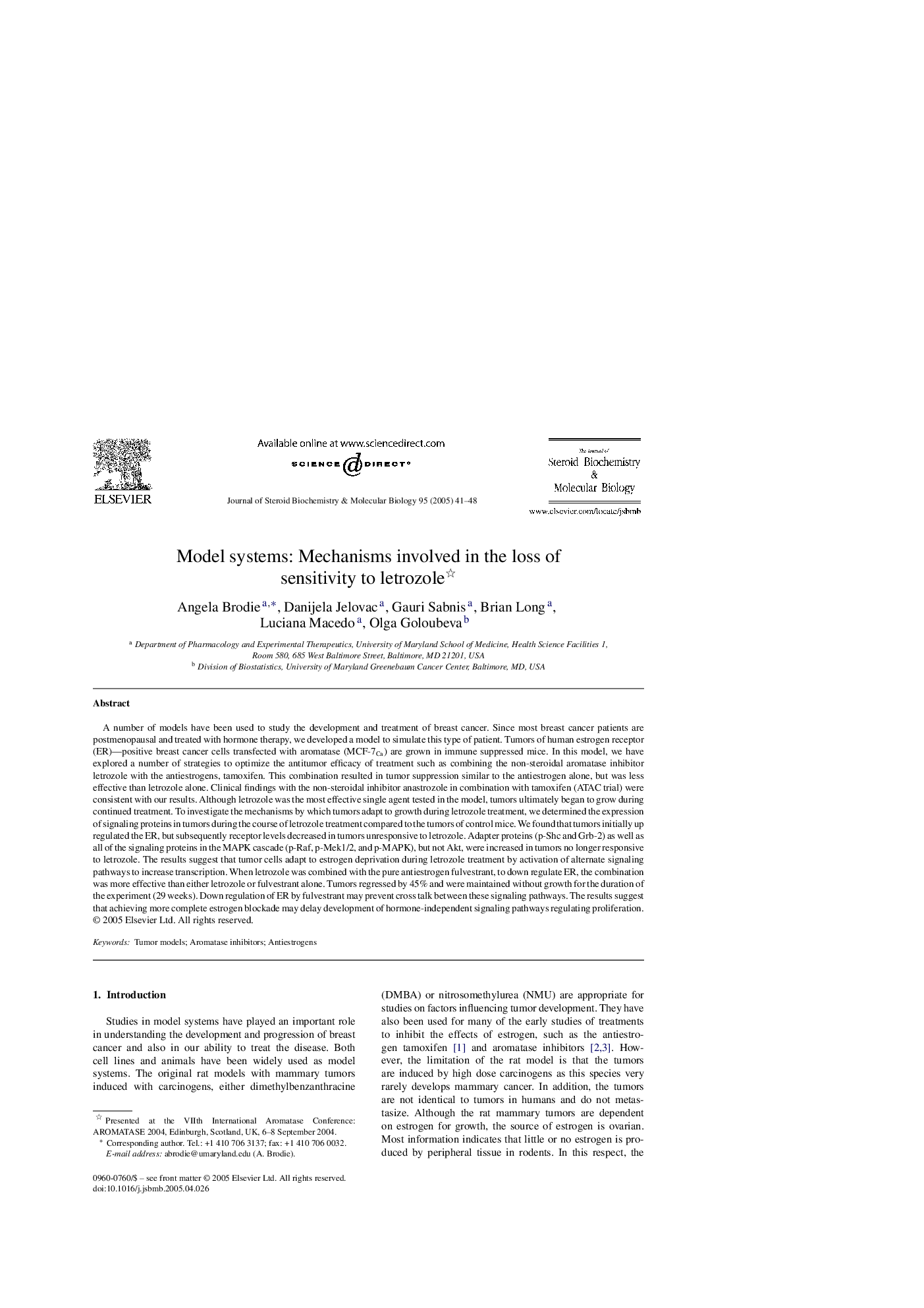| Article ID | Journal | Published Year | Pages | File Type |
|---|---|---|---|---|
| 9892121 | The Journal of Steroid Biochemistry and Molecular Biology | 2005 | 8 Pages |
Abstract
A number of models have been used to study the development and treatment of breast cancer. Since most breast cancer patients are postmenopausal and treated with hormone therapy, we developed a model to simulate this type of patient. Tumors of human estrogen receptor (ER)-positive breast cancer cells transfected with aromatase (MCF-7Ca) are grown in immune suppressed mice. In this model, we have explored a number of strategies to optimize the antitumor efficacy of treatment such as combining the non-steroidal aromatase inhibitor letrozole with the antiestrogens, tamoxifen. This combination resulted in tumor suppression similar to the antiestrogen alone, but was less effective than letrozole alone. Clinical findings with the non-steroidal inhibitor anastrozole in combination with tamoxifen (ATAC trial) were consistent with our results. Although letrozole was the most effective single agent tested in the model, tumors ultimately began to grow during continued treatment. To investigate the mechanisms by which tumors adapt to growth during letrozole treatment, we determined the expression of signaling proteins in tumors during the course of letrozole treatment compared to the tumors of control mice. We found that tumors initially up regulated the ER, but subsequently receptor levels decreased in tumors unresponsive to letrozole. Adapter proteins (p-Shc and Grb-2) as well as all of the signaling proteins in the MAPK cascade (p-Raf, p-Mek1/2, and p-MAPK), but not Akt, were increased in tumors no longer responsive to letrozole. The results suggest that tumor cells adapt to estrogen deprivation during letrozole treatment by activation of alternate signaling pathways to increase transcription. When letrozole was combined with the pure antiestrogen fulvestrant, to down regulate ER, the combination was more effective than either letrozole or fulvestrant alone. Tumors regressed by 45% and were maintained without growth for the duration of the experiment (29 weeks). Down regulation of ER by fulvestrant may prevent cross talk between these signaling pathways. The results suggest that achieving more complete estrogen blockade may delay development of hormone-independent signaling pathways regulating proliferation.
Related Topics
Life Sciences
Biochemistry, Genetics and Molecular Biology
Biochemistry
Authors
Angela Brodie, Danijela Jelovac, Gauri Sabnis, Brian Long, Luciana Macedo, Olga Goloubeva,
